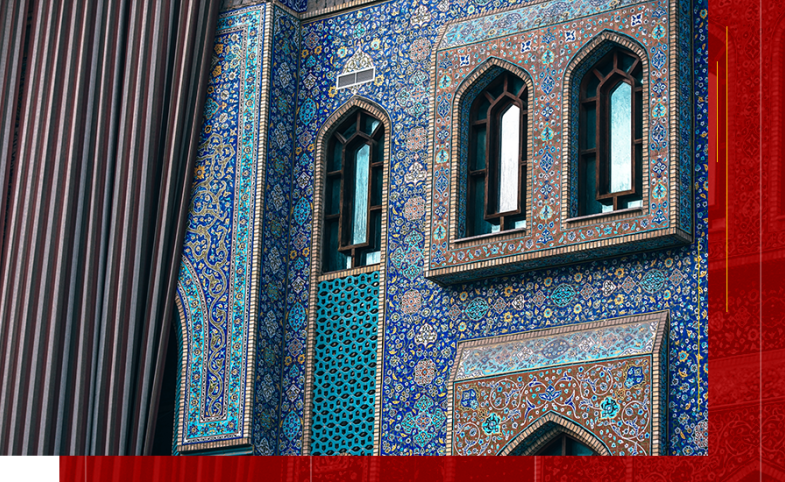“Public Diplomacy in the News” is a CPD Blog series by Andrew Dubbins that spotlights noteworthy stories on public diplomacy topics such as cultural diplomacy, nation branding, exchange programs, international...
KEEP READINGThe CPD Blog is intended to stimulate dialog among scholars and practitioners from around the world in the public diplomacy sphere. The opinions represented here are the authors' own and do not necessarily reflect CPD's views. For blogger guidelines, click here.

Public Diplomacy in the News: Remembering William Luers, AI for Diplomacy, & Ancient Arabian Art
“Public Diplomacy in the News” is a CPD Blog series by Andrew Dubbins that spotlights noteworthy stories on public diplomacy topics such as cultural diplomacy, nation branding, exchange programs, international events and conferences, digital diplomacy, and strategic global communications.
Remembering William H. Luers and his legacy of cultural diplomacy. William H. Luers, a distinguished American diplomat and cultural advocate, died at age 95. Luers was the founding chair of the USC Center on Public Diplomacy’s Advisory Board, and served as a member from 2004 to 2012. As ambassador to Czechoslovakia, he played a pivotal role in safeguarding Czech dissident Vaclav Havel during the final years of Communist rule, ultimately contributing to Havel’s rise as the first president of the Czech Republic. Leveraging his extensive network of American artists and intellectuals, Luers orchestrated high-profile visits to Prague to generate international attention and deter the regime from harming Havel. Throughout his 29-year Foreign Service career, he specialized in Soviet and East European affairs, and later became a highly effective president of the Metropolitan Museum of Art. Known for his belief in the power of culture in diplomacy, Luers continued his public service through leadership roles with the United Nations Association and the Iran Project, and reflected on his career in his 2024 memoir, Uncommon Company: Dissidents and Diplomats, Enemies and Artists.
AI emerges as a new force in American diplomacy. The U.S. government, think tanks, and foreign ministries worldwide are exploring the use of artificial intelligence to shape foreign policy, assist in crisis negotiations, and even draft peace agreements, with active experiments focused on resolving the war in Ukraine. While some AI models favor de-escalation, others promote aggression, revealing inherent biases based on their creators and training data. Despite AI's promise for accelerating negotiations and analyzing complex geopolitical scenarios, experts warn it lacks the human intuition and relational dynamics critical to diplomacy. Concerns also remain over AI’s inability to foresee long-term consequences and its limited effectiveness in closed societies like North Korea and Russia.
Smithsonian and Saudi Arabia forge cultural heritage partnership. The Smithsonian’s National Museum of Asian Art and the Royal Commission for AlUla in Saudi Arabia have launched a collaboration to advance cultural exchange, preserve heritage, and deepen scholarly understanding of ancient Arabian art, particularly the site of Dadan. This agreement, signed during a state visit, will foster joint research, professional skill development, and shared exhibitions over the next four years. Through staff exchanges and collaborative conservation projects, both institutions aim to strengthen ties between the U.S. and Saudi Arabia, highlighting the vital role of art and heritage in connecting nations.
NFL considers allowing players to compete in 2028 Olympic flag football. NFL owners are preparing to vote on a resolution that would allow contracted players to compete in flag football at the 2028 Los Angeles Olympics under specific guidelines. The proposal would limit participation to one NFL player per team for each national team, provide injury protections and salary-cap considerations, and require Olympic organizers to meet NFL medical and field standards. With flag football making its Olympic debut, the league views player participation as a way to grow global interest in the sport, enhance fan engagement, and strengthen the NFL’s international presence.
Bridging cultures through the art of fine dining. German-Japanese chef Tohru Nakamura, raised between two cultures, has become an informal ambassador of cultural diplomacy through his Michelin-starred cuisine in Munich. Blending Japanese and European culinary traditions, Nakamura’s dishes reflect his bicultural upbringing, offering a narrative that resonates differently with Japanese and European diners. After the pandemic shuttered his previous restaurant, he reunited his team and opened his namesake restaurant, where his creative tasting menus tell stories of heritage and personal history. Through his culinary art, Nakamura fulfills his childhood potential for diplomacy—bridging cultures not through politics, but through food.
Visit CPD's Online Library
Explore CPD's vast online database featuring the latest books, articles, speeches and information on international organizations dedicated to public diplomacy.
POPULAR ARTICLES
-
November 3
-
November 5
-
November 13
-
October 16
-
October 16
Join the Conversation
Interested in contributing to the CPD Blog? We welcome your posts. Read our guidelines and find out how you can submit blogs and photo essays >.













